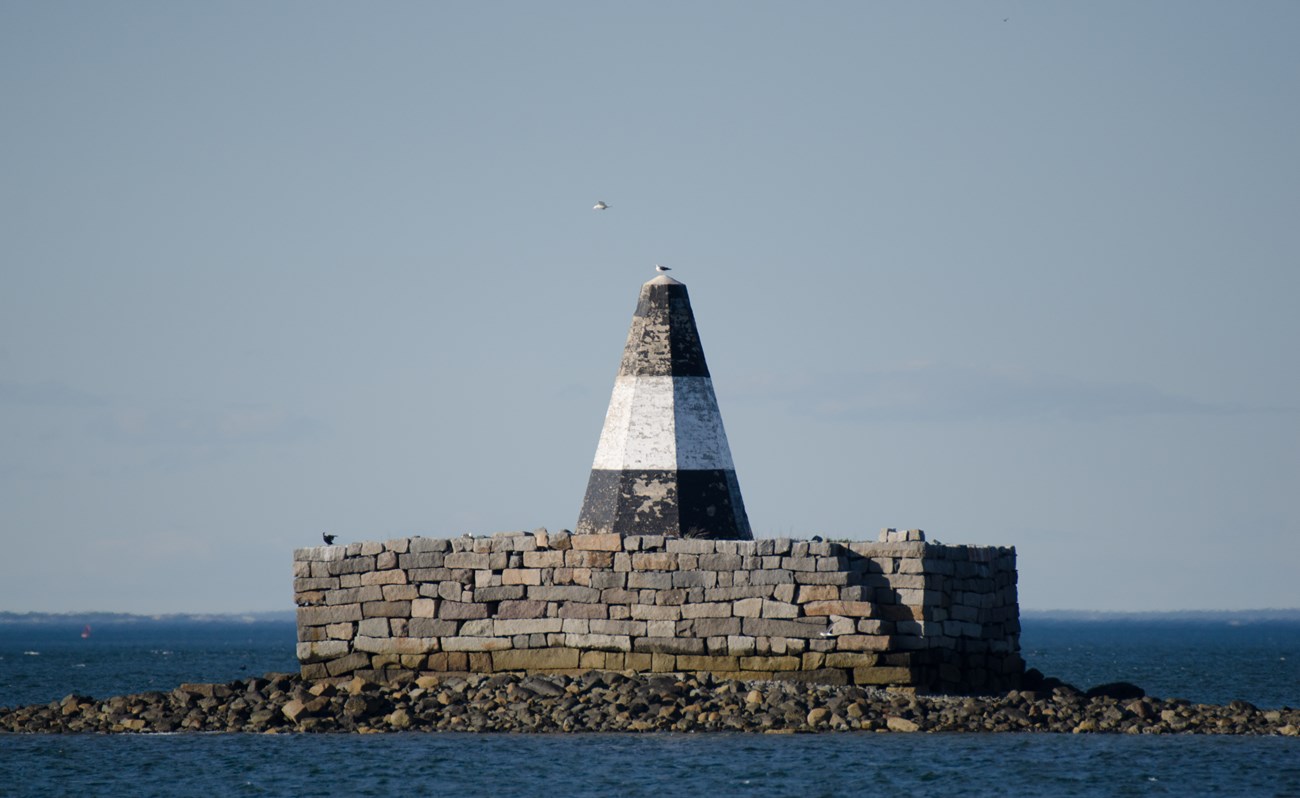
NPS Photo/ Jobe Pirate lore surrounds this black and white marker which has guided boat traffic for a century. General InformationNixes Mate of Boston Harbor Islands National and State Park is managed by U.S. Coast Guard, First District. Visitor Facilities & ServicesNixes Mate is not open to the public. There is no docking. Boaters must anchor offshore.
Short HistoryMaterial was quarried from the island to be used as ballast for ships during the 1600s and slate was quarried in the 1700s. In 1636, it was granted to John Gallop, a harbor pilot who resided on Gallops Island and grazed his sheep on the then 12-acre "Nixes Island." In the early 1700s, the body of an executed criminal, pirate William Fly, was chained to the island, and two other pirates were buried here. At the time, the island was called "Nick’s Mate" (1726). The Boston Marine Society erected the pyramid beacon perched on granite base in 1805. Date of current wooden pyramid is unknown. (Further research is currently being conducted.) Nixes Mate daymarker is listed in the National Register of Historic Places. To search for other listings on the National Register, please visit the National Register's inventory database. Natural History OverviewVegetationSubaquatic vegetation. WildlifePlease see Animals page for more information. GeologyThe beacon stands approximately 20 feet high. At low tide the beacon is surrounded by rocky flats and a sandspit to the south. Water FeaturesNo constructed water features. Views and VistasThe striped black and white beacon is visible from most points in the harbor. Structures
|
Last updated: November 30, 2023
